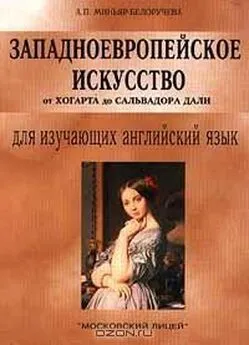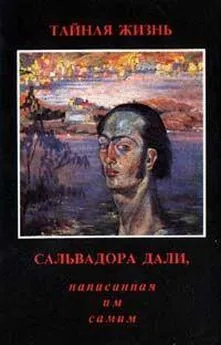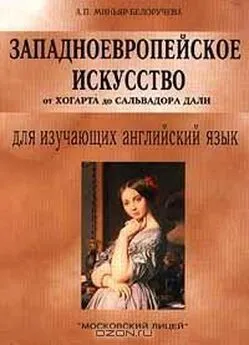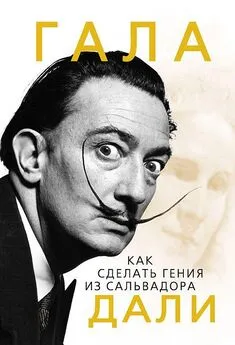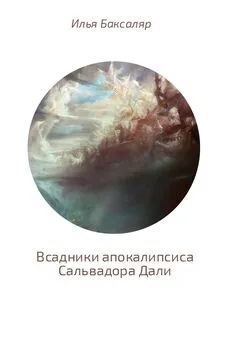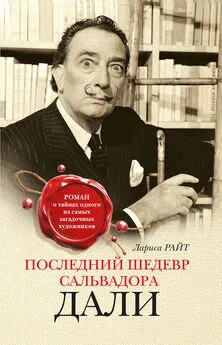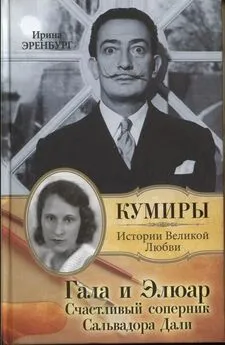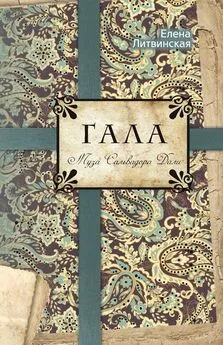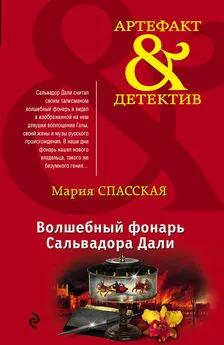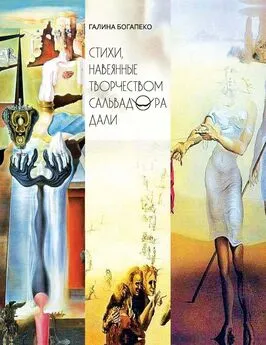Западноевропейское искусство от Хогарта до Сальвадора Дали
- Название:Западноевропейское искусство от Хогарта до Сальвадора Дали
- Автор:
- Жанр:
- Издательство:неизвестно
- Год:неизвестен
- ISBN:нет данных
- Рейтинг:
- Избранное:Добавить в избранное
-
Отзывы:
-
Ваша оценка:
Западноевропейское искусство от Хогарта до Сальвадора Дали краткое содержание
«Московский Лицей»
пособие для изучающих английский язык
издание второе переработанное и дополненное
Москва – 1999
Рецензенты:
Е. Б. Яковлева, доктор филологических наук, профессор
И. В. Шевлягина, кандидат филологических наук, доцент
РЕКОМЕНДОВАНО кафедрой иностранных языков исторического факультета МГУ им. М. В. Ломоносова
Тексты настоящего пособия охватывают почти три века истории западноевропейского искусства от Хогарта до Сальвадора Дали. Это позволяет обучаемым наряду с усвоением обширного лексического материала, приобрести культурологические знания, поскольку тексты содержат информацию о жизни и творчестве крупнейших западно-европейских художников XVIII – XX вв. Система упражнений направлена на усвоение лексического материала и развитие навыков устной речи.
Данная книга является второй частью цикла учебных пособий «Западноевропейское искусство (для изучающих английский язык)». В первую книгу вошли тексты, охватывающие пять веков западноевропейской живописи oт Джотто до Рембрандта. Данное пособие предназначено для студентов-искусствоведов, учащихся классических гимназий, лицеистов и всех изучающих английский язык и интересующихся западноевропейским искусством.
© Миньяр-Белоручева А. П.
© Оформление «Московский Лицей». 1999
ISBN 5-7611-0182-3
___DdeLink__6_1602129716 Издательство Адрес: Телефон
акс
Тираж 5000 экз.
Западноевропейское искусство от Хогарта до Сальвадора Дали - читать онлайн бесплатно полную версию (весь текст целиком)
Интервал:
Закладка:
VI. Summarize the text.
VII. Topics for discussion.
1. Gauguin as a life-long rebel.
2. Gauguin as a founder of modem art.
Unit XVI Van Gogh (1853-1890)
Van Gogh identified art with emotion. The son of a Protestant Dutch minister, the young Van Gogh was by turns the employee of a firm of art dealers, a language teacher, a student of practical evangelism and a missionary to the coal miners. Through these fragmentary careers runs the theme – a love of humanity, and of life. This love was the theme of his art as well, and was to produce one of the most intensely personal witnesses in the spiritual history of mankind. Even Van Gogh's mental illness, that brought about his frequent hospitalisations and his untimely death, did not prevent him from becoming the only Dutch painter whose stature could set him on a level with the three great Dutch masters of the seventeenth century.
In 1881 Van Gogh started to study art, but remained in a somewhat provincial Dutch tradition, out of touch with the colouristic discoveries of Impressionism. In 1886 he came to Paris for a two-year stay with his brother Theo, and under the influence of Impressionism and Japanese prints freed his palette and worked out a fresh, new, highly original sense of pattern in contour. Having shown signs of depression and emotional instability, he left the north early in 1888, hoping to find a happier existence in Arles, in Provence. During the next two years, he painted at white heatoften a canvas a day – his series of masterpieces in a style unprecedented in European art. He was fascinated by the beauty of the landscape, by the southern light, absolutely different from that of northern France with its mists and rain. He noted that the intense sunlight could drive a man mad.
An excellent example of his brief period of happiness is his A View of La Craw, painted in June 1888, with its almost Renaissance perspective of fields and farms, a surprising revival of the principles that had been swept aside by the Impressionists and Gauguin. To Van Gogh space construction became an expressive device, moving the observer forcefully toward the distant mountains. The whole picture is coloured in red-gold and blue that were his own colours. The thick pigment, blazing colour, and strong, straight strokes are Van Gogh's personal transformation of Impressionist technique. The happy period did not last long. In September 1888 Van Gogh painted the first of his disturbing pictures, The Night Cafe . The perspective is so strongly exaggerated here that it seems to catapult the observer into the end wall, in which the red-and-green contrast is insoluble.
In late December of the same year Van Gogh threw with violence a knife at Gauguin and then cut off his own ear. Van Gogh was cared for at first in the hospital at Arles, and then in the asylum at nearby Saint-Remy. He was allowed to paint and produced beautiful and moving works. Van Gogh's Self-portrait, painted in the asylum in September 1889, reveals the period of desperation through which the artist had passed. The brushstrokes are now curved and vibrate throughout the picture. In a mood of renewed confidence, the artist has endowed the painting with his own physical colouring: his ivory face, gold hair, red-gold beard float in tides of deep blue, the colour of the artist's eyes. Only in Rembrandt's self-portraits it is possible to find such intense self-revelation.
In the fields near the asylum, by day and at night, Van Gogh drew and painted the wonders of the earth and sky. These pictures communicate a mood of self-identification, which is the mark of religious ecstasy in Van Gogh. The Starry Night , painted in June 1889, shows not only the stars Van Gogh observed but exploding masses of gold fire, expanding against the blue. Two of these swirl through the sky in a kind of cosmic embrace, unimagined by the sleeping town below.
In May 1890 Van Gogh went to Paris for a three-day stay with his brother, then to Auvers where Dr. Paul Gachet took care of him. Despairing of the cure, he shot himself on July 27, and died two days later. For all the tragic circumstances of his life, Van Gogh won a spiritual victory in opening a new path for artistic vision and expression.
Make sure you know how to pronounce the following words:
Vincent Van Gogh; Theo; Protestant; evangelism; Provence
A View of La Craw – «Вид на долину Ла Кро»
The Night Cafe – «Ночное кафе»
The Starry Night – «Звездная ночь»
I. Read the text. Make sure you understand it. Mark the following statements true or false.
1. In 1886 Van Gogh started to study art but he was out of touch with the colouristic discoveries of Impressionism.
2. Van Gogh's favourite colours were green, white and blue.
3. In Italy Van Gogh painted his series of masterpieces in a style unprecedented in European art.
4. Van Gogh constantly drew and painted the wonders of the earth and sky.
5. Van Gogh was fascinated by the beauty of the landscape of northern France with its mists and rain.
6. Van Gogh won a spiritual victory in opening a new path for artistk vision and expression.
II. How well have you read? Can you answer the following questions?
1. What did Van Gogh do in his youth? What was the theme of Van Gogh's art? What did Van Gogh work out in Paris under the influence of Impressionism and Japanese prints?
2. Why did Van Gogh leave Paris? What did he do during the next two years? How many canvases did Van Gogh paint in Arles? What inspired Van Gogh?
3. What was revived in A View of La Craw ? What expressive device was used in this painting? How did Van Gogh transform the Impressionist technique?
4. Why is The Night Cafe characterised as a disturbing picture? What happened in late December of 1889? What was Van Gogh allowed to do in the hospital?
5. What does Van Gogh's Self-Portrait reveal? What colours dominate in this work of art? What mood does the picture communicate?
6. What does The Starry Night represent? What were Van Gogh's innovations?
III. i. Give Russian equivalents of the following phrases:
to identify art with emotion; the colouristic discoveries of Impressionism; to free the palette; space construction; to work out a new, original sense of pattern in contour; emotional instability; Renaissance perspective; an expressive device; brushstrokes vibrate throughout the picture; to endow the painting with; cosmic embrace; tragic circumstances; to win a spiritual victory; artistic vision and expression; a style unprecedented in European art; transformation of Impressionist technique; against the blue.
ii. Give English equivalents of the following phrases:
одержать духовную победу над; модифицирование техники импрессионистов; колористические открытия импрессионистов; быть очарованным; мазки пульсируют в картине: видение художника; трагические обстоятельства; объятие космоса; одержать духовную победу; оригинальный стиль; на голубом фоне; построение пространства; для достижения большей выразительности; разработать новый оригинальный контур; перспектива Ренессанса.
iii. Make up sentences of your own with the given phrases.
iv. Arrange the following in the pairs of synonyms:
a) to vibrate; expressive; device; to endow; technique; spiritual; victory;
b) ethereal; to bestow; meaningful; triumph; invention; to wave; method.
IV. Here are descriptions of some of Van Gogh's works of art. Match them up to the titles given below.
1. In this painting the perspective is so strongly exaggerated that it seems to catapult the observer into the end wall.
2. Exploding masses of gold fire expand against the blue.
3. Renaissance perspective of fields and farms is revived in this painting.
4. In a mood of renewed confidence, the artist has endowed the painting with his own physical colouring.
a. The Starry Night
b. The Night Cafu
c. Self-Portrait
d. A View of La Craw
V. Translate the text into English.
Винцент Ван Гог – «великий голландец» – неразрывно связан с французской живописной школой. Художника, воплотившего душевную смятенность современного человека, называют постимпрессионистом. В своих произведениях Ван Гог выразил глубокий трагизм, с которым он воспринимал жизнь. Любой портрет, пейзаж или натюрморт у Ван Гога исполнен скрытой драматической силы. Ощущение беспокойства выражено в резком звучании красок.
Творчество Ван Гога охватывает десятилетие, причем самыми важными являются последние пять лет. Это были годы нечеловеческого труда, в результате которого Ван Гог создал произведения, оставившие неизгладимый след в мире искусства.
VI. Summarize the text.
VII. Topics for discussion.
1. Van Gogh's style and colour.
2. Van Gogh's theme.
3. Van Gogh's artistic heritage.
Unit XVII Matisse (1869-1954)
When the twentieth century opened, Henry Matisse, already past thirty, was a competent painter in a modified Impressionist style. He was not interested in the innovations of the Post-Impressionists. Soon after the turn of the century Matisse began experimenting with figures so simplified that their masses could be stated in bold areas of pigment. Then he turned to the divided touches of bright colour introduced by the Neo-impressionists. In 1905 came the Fauve explosion. Matisse burst upon the art world with astonishing series of paintings in which masses of brilliant colour were applied in broad areas and full intensity. His Green Stripe , of 1905, exhibited in the celebrated group of Fauve pictures in the Salon d'Automne, excited horror because this blazing bouquet of colours was applied not only to the background but also to the face, dominated by the green stripe through the centre of the forehead and down the nose. Matisse intensified the differentiation of hues already analysed by the Impressionists in order to produce a strong emotional effect. Not even Gauguin had dreamed of such distortions.
The triumphant affirmation of Matisse's Fauve period is the huge Joy of Life, of 1905-6, almost eight feet long. A forest glade is inhabited by a happy company of nudes, male and female, embracing, playing pipes, picking flowers, draping garlands about their bodies, or dancing in a ring, all indicated with an unbroken contour of the utmost flexibility. In a sense, Matisse's new scale and contour were prepared by Gauguin. But Matisse has gone farther, especially in his heightening of colour to intensify the fluidity of contour. The primitivism desired by Gauguin has been reached here without reference to exotic cultures. Matisse's figures abandon themselves to nature physically as the Impressionist painter and viewer had visually.
Читать дальшеИнтервал:
Закладка:
